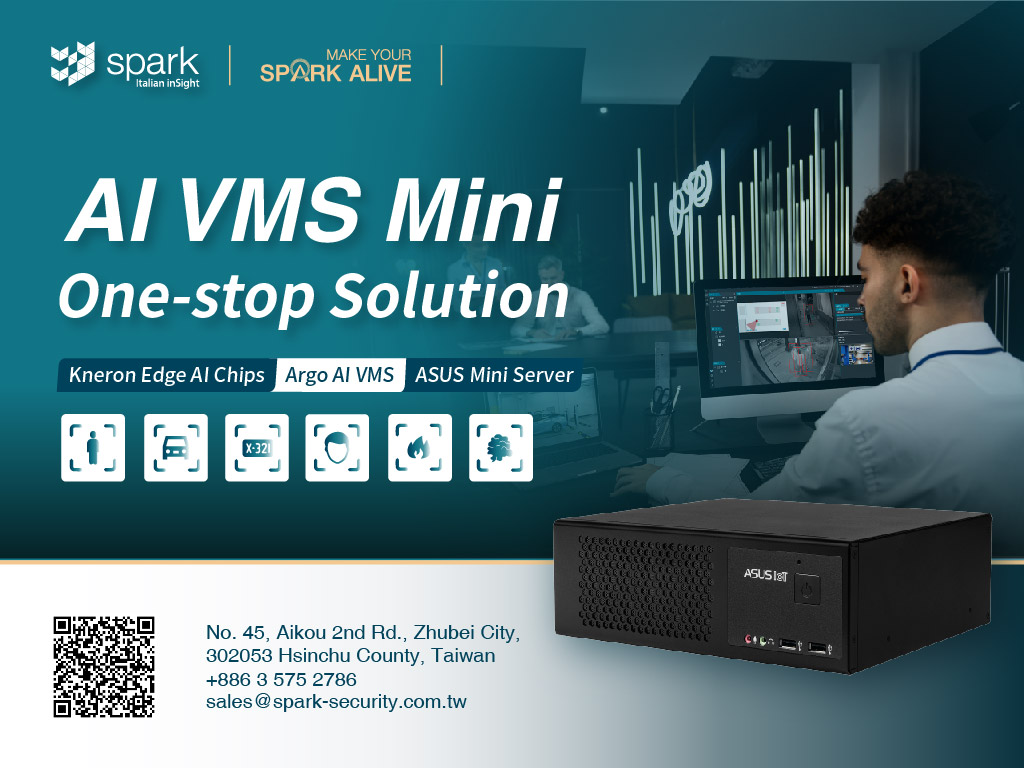2025.02.20
As AI becomes more widespread, Edge AI has emerged as the top choice for security monitoring.
It involves using AI capabilities near edge devices for real-time data processing, rather than relying on distant cloud servers. This approach reduces transmission delays and significantly improves response time.
With the growing demand for security monitoring, businesses need AI to boost efficiency, cut labor costs, and quickly address potential threats. This model enhances response speed and lowers bandwidth needs, making it the preferred solution for many companies.
What is Edge AI ? Edge Computing vs Cloud Computing
Cloud computing relies on centralized servers, transmitting data over the internet for processing, which can cause delays.
In contrast, edge computing embeds AI algorithms and machine learning models in devices like cameras and sensors, allowing on-site data analysis without sending everything to the cloud. This real-time processing boosts efficiency and saves bandwidth during transmission.
Why Are Businesses Turning to Edge AI?
With the growth of IoT devices, data generation is skyrocketing, and businesses need to respond rapidly. However, traditional cloud processing can cause delays.
Edge AI processes data in real time at the source, allowing businesses to make quick decisions in critical situations, improving operational efficiency.
Additionally, bandwidth utilization is crucial. Uploading large amounts of data to the cloud consumes significant network bandwidth. Edge AI reduces this dependence by processing data locally and sending only essential information to the cloud, saving bandwidth costs effectively.

Source:freepik.com
 |
Lower Latency Edge AI places computing power closer to end users, processing data in milliseconds. This is crucial for businesses needing fast responses, as lower latency allows systems to react quickly, ensuring public safety and improving performance. |
||||||
|
|
Save bandwidth and costs Traditional surveillance sends large data to the cloud, increasing costs and congestion. Edge AI processes data locally, uploading only essential info, reducing bandwidth and storage costs. |
||||||
|
|
Improved securityEdge AI can process sensitive data locally, reducing risks during data transmission and enhancing the effectiveness of data protection. |
||||||
 |
Customizable and scalable.Edge AI integrate easily with existing hardware and software, enabling businesses to quickly expandor adjust their surveillance systems. |
||||||
Use Cases of Edge AI in Surveillance
Traffic Monitoring
Zhubei, Hsinchu County, is a busy traffic hub attracting heavy daily traffic. To improve monitoring, Spark helped the Hsinchu County Police implement the AI VMS Mini at Xingxue Street, upgrading the camera system for real-time license plate uploads to enhance traffic surveillance and public safety.

Edge AI and Image Recognition Integration
Edge AI has emerged to adapt to the rapidly changing big data landscape, enabling real-time data processing that enhances business flexibility and decision-making efficiency. Its acceptance among companies as a key competitive technology is growing. The integration of Edge AI with image recognition also opens new possibilities for the security monitoring industry.
Spark’s AI solutions deliver significant benefits, including enhanced security, reduced costs, and improved customer satisfaction. For more information, feel free to contact us.

As AI becomes more widespread, Edge AI has emerged as the top choice for security monitoring.
It involves using AI capabilities near edge devices for real-time data processing, rather than relying on distant cloud servers. This approach reduces transmission delays and significantly improves response time.
With the growing demand for security monitoring, businesses need AI to boost efficiency, cut labor costs, and quickly address potential threats. This model enhances response speed and lowers bandwidth needs, making it the preferred solution for many companies.
What is Edge AI ? Edge Computing vs Cloud Computing
Cloud computing relies on centralized servers, transmitting data over the internet for processing, which can cause delays.
In contrast, edge computing embeds AI algorithms and machine learning models in devices like cameras and sensors, allowing on-site data analysis without sending everything to the cloud. This real-time processing boosts efficiency and saves bandwidth during transmission.
Why Are Businesses Turning to Edge AI?
With the growth of IoT devices, data generation is skyrocketing, and businesses need to respond rapidly. However, traditional cloud processing can cause delays.
Edge AI processes data in real time at the source, allowing businesses to make quick decisions in critical situations, improving operational efficiency.
Additionally, bandwidth utilization is crucial. Uploading large amounts of data to the cloud consumes significant network bandwidth. Edge AI reduces this dependence by processing data locally and sending only essential information to the cloud, saving bandwidth costs effectively.

Source:freepik.com
 |
Lower Latency Edge AI places computing power closer to end users, processing data in milliseconds. This is crucial for businesses needing fast responses, as lower latency allows systems to react quickly, ensuring public safety and improving performance. |
||||||
|
|
Save bandwidth and costs Traditional surveillance sends large data to the cloud, increasing costs and congestion. Edge AI processes data locally, uploading only essential info, reducing bandwidth and storage costs. |
||||||
|
|
Improved securityEdge AI can process sensitive data locally, reducing risks during data transmission and enhancing the effectiveness of data protection. |
||||||
 |
Customizable and scalable.Edge AI integrate easily with existing hardware and software, enabling businesses to quickly expandor adjust their surveillance systems. |
||||||
Use Cases of Edge AI in Surveillance
Traffic Monitoring
Zhubei, Hsinchu County, is a busy traffic hub attracting heavy daily traffic. To improve monitoring, Spark helped the Hsinchu County Police implement the AI VMS Mini at Xingxue Street, upgrading the camera system for real-time license plate uploads to enhance traffic surveillance and public safety.

Edge AI and Image Recognition Integration
Edge AI has emerged to adapt to the rapidly changing big data landscape, enabling real-time data processing that enhances business flexibility and decision-making efficiency. Its acceptance among companies as a key competitive technology is growing. The integration of Edge AI with image recognition also opens new possibilities for the security monitoring industry.
Spark’s AI solutions deliver significant benefits, including enhanced security, reduced costs, and improved customer satisfaction. For more information, feel free to contact us.






